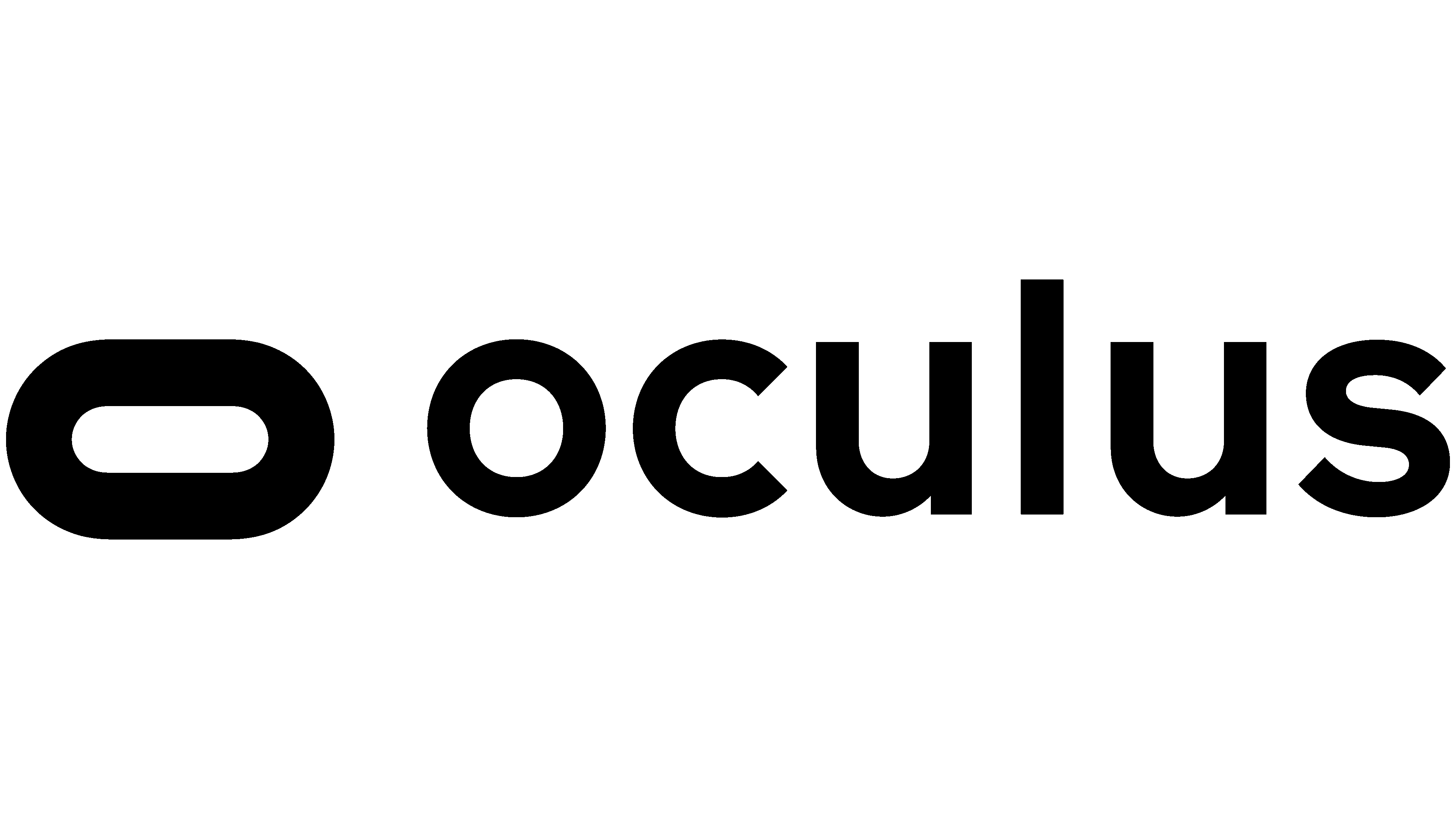Oculus Logo
Oculus, a pioneer in the realm of virtual reality (VR), currently focuses on developing cutting-edge VR hardware and software solutions. Their flagship products, including the Oculus Rift and Quest series, cater to a diverse audience ranging from gamers to professionals. As a subsidiary of Meta Platforms, Inc. (formerly Facebook, Inc.), Oculus has expanded its market presence globally, with North America and Europe being primary targets. Meta’s ownership bolsters Oculus’s innovative pursuits, aiming to redefine the boundaries of digital interaction and immersive experiences in the ever-evolving tech landscape.
Meaning and history
Oculus started its journey in the realm of virtual reality (VR) in 2012, conceived by Palmer Luckey. The initial prototype, named “Rift”, garnered attention when game programmer and VR enthusiast John Carmack showcased it at E3 2012.
Sensing its potential, Luckey launched a Kickstarter campaign later that year, aimed at refining and mass-producing the Rift. This campaign was an astounding success, raising almost $2.5 million and indicating the market’s appetite for immersive VR experiences.
The buzz around Oculus intensified, attracting the attention of major players in the tech industry. In 2014, in a pivotal moment for Oculus, Facebook acquired the company for approximately $2 billion. Mark Zuckerberg, Facebook’s CEO, expressed his vision for Oculus not just as a gaming platform, but as a new communication platform that could redefine the way people interact.
Under Facebook’s (now Meta Platforms, Inc.) stewardship, Oculus underwent significant transformations. In 2016, the Oculus Rift officially hit the market, marking the start of consumer-grade VR headsets. Later, Oculus introduced the standalone Quest series, eliminating the need for external hardware, and thereby widening VR’s appeal.
Throughout its existence, Oculus has faced various challenges, from legal disputes to competition from other VR manufacturers. However, with Meta’s backing, the company has continued to invest heavily in R&D, striving to enhance VR technology’s quality, accessibility, and application.
Today, Oculus stands as a testament to the blend of visionary ideas and strategic business decisions, continually pushing the boundaries of what’s possible in the digital realm. With each product iteration, Oculus brings the world closer to fully-realized virtual experiences, shaping the future of digital interaction.
2012 – 2015
In its infancy, Oculus, while crowdfunding for the Rift prototype, introduced an eye-centric logo. This emblem, though elementary in design, encapsulated the essence of virtual reality. Featuring a blue core, a stark white middle ring, and an outer shadow of deep gray, it evoked a sense of the uncanny. Crafted using basic geometric elements like circles and ellipses with acute edges, the symbol may not have been a masterpiece, yet it played a pivotal role in establishing the company’s identity on a global stage.
Adjacent to this intriguing emblem, the word “Oculus” was etched in muted gray. Deriving from Latin, “Oculus” translates to “eye,” presenting a twofold significance. Not only did it resonate with the brand’s eye-inspired symbol, but it also alluded to the immersive visual experience offered by their VR headsets. The name and the logo together embodied the very core of the brand’s vision and promise.
2015 – 2020
In 2014, Facebook acquired Oculus, subsequently ushering in a rebranding phase. Marking this transition, a fresh design was unveiled on June 11, 2015, during a press gathering at the Electronic Entertainment Expo.
Ahead of this event, enthusiasts got a sneak peek at the revamped emblem via the Oculus official website. This renewed visual symbol progressively edged out the older eye-themed representation. While the design wasn’t entirely revolutionary, it retained the emblem’s horizontal stretch and geometric motif. The familiar eye lost its blue centerpiece and pointed edges. Textually, minimal changes were noticeable; a tweak in the font and the initial “O” rendered in lowercase.
The redesigned logo was a collective masterpiece of artists including Jon Malkemus, Nicolaus Taylor, Mackey Saturday, and Cory Schmitz. Pooling their talents with Oculus’ creative minds, they devised an iconic design synonymous with VR headsets today.
The logo predominantly showcases an elongated “O”, reminiscent of VR goggles’ frontal view. Interestingly, this logo shape is also mirrored by a slider found on Oculus devices. Though internally termed “stadium”, this name didn’t gain traction given its tenuous logical link. Yet, from an aerial perspective, the elongated “O” bears semblance to a stadium.
Aiming for a timeless appeal, the team endeavored to craft a visual brand adaptable to Oculus’ future innovations. Given VR’s rapid evolution, a versatile, abstract emblem seemed apt. This minimalist design affords vast adaptability, facilitating branding extensions and maintaining clarity across varied scales.
Discarding the original design addressed certain concerns. The former eye emblem, evoking surveillance undertones, inadvertently alluded to Facebook’s data privacy controversies. Conversely, the refreshed, geometric symbol effectively aligns with Oculus’ core business—VR.
However, the revised “O” faced criticism for its overt simplicity, sharing uncanny similarities with logos of firms like Oracle and the fashion brand Vonrosen.
Originally, Oculus’ typographic choice was Cabin Bold, which still graces their digital platforms. While close kin includes DIN Mittel Medium and Source Sans Pro, they aren’t identical twins. By 2015, subtle letter refinements emerged—removal of the “l” base, broader “u” strokes, and sharper “c” terminations. Additionally, the typeface embraced a lowercase format, deviating from its predecessor.
The logo’s accompanying text aligns either beneath or adjacent to the emblematic “O”. Presented in stark black against a pristine white canvas, this monochromatic theme further underscores Oculus’ minimalist aesthetic, ensuring universal logo application.
2020 – Today
Following a subtle redesign by Moniker’s design studio in collaboration with internal teams, the logo underwent a distinct transformation. Instead of the previous two-tiered arrangement, the elements now align seamlessly in a single horizontal line. In achieving this refreshed layout, the designers scaled down the horizontal ellipse, emblematic of the eye, and spaced out the individual characters for a clearer and more expansive visual presentation. This overhaul, while seemingly minor, greatly impacted the logo’s visual balance and aesthetic appeal, ensuring that it maintained a contemporary and clean look that resonates with today’s design preferences.














